 |
This task explains how to create a 3D curve using clouds of
points or polygons as support.
The curve may not lie on the cloud or polygons but its construction points
should be constrained onto them: the manipulator is always tangent to the
cloud or polygon and always lies on it. |
 |
Open the
FreeStyle_05.CATPart document. |
 |
-
Click the 3D Curve icon
 . .
The 3D curve dialog box is displayed.
-
Choose the curve creation type.
|
| |
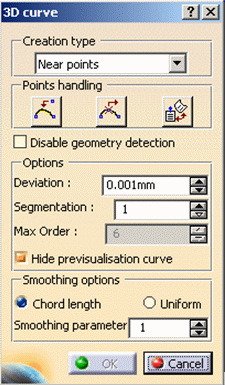
|
|
- Through points: the resulting curve is a multi-arc curve
passing through each selected point.
|
| |
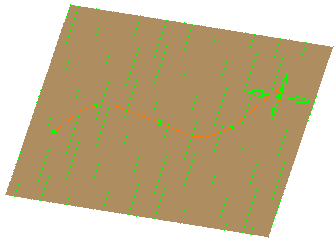
|
|
- Control points: the points you click are the control
points of the resulting curve
|
| |

|
|
- Near points: the resulting curve is a single-arc, with a
set degree and smoothed through the selected points.
|
| |
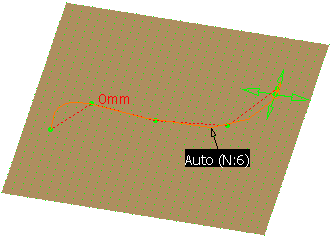
|
|
-
Click OK to create the curve.
A 3DCurve.xxx appears in the specification tree.
|
| |
- If the cloud is not tessellated, points of the resulting curve are
constrained on both cloud and points of cloud. Therefore, you must snap
from point to point on the cloud.
|
| |
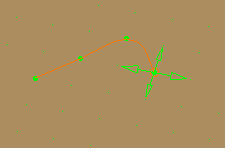
|
| |
- If the cloud is tessellated, points of the resulting curve are
constrained on the cloud but not on the points of the cloud. Therefore,
you can select a point anywhere on the cloud.
|
| |
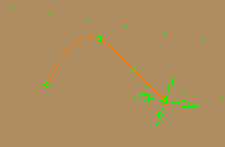
|
 |
For further information on the options of the
dialog box, refer to the Creating Associative
3D Curves chapter. |
| |
Selecting all 3D points
|
|
It is possible to select all the points
either in the specification tree or directly in the geometry. The
Select all points contextual menu is available within the 3D curve
action only, when the 3D Curve dialog box is open.
- In the specification tree:
- select the geometrical set just by clicking it, or
- right-click the geometrical set and choose Select all points
in the geometrical set from the contextual menu, or
- select a point in the geometrical set, right-click it and choose
Select all points in the geometrical set from the contextual
menu.
- In the geometry: select a point, right-click it and choose
Select all points in the geometrical set from the
contextual menu.
|
| |
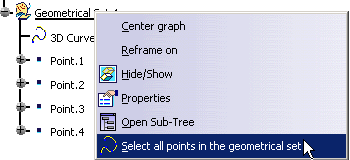
|
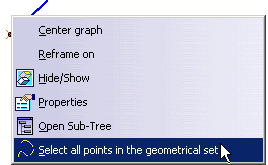 |
| |
Contextual Options
|
| |
Double-click your curve, right-click on the manipulator to
display the contextual menu.
Refer to the Creating Associative 3D Curves
to get the corresponding information. |
| |
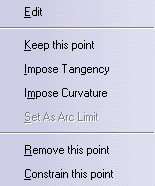
|
 |
Note that you cannot constrain on an element when imposing
a tangency or curvature constraint. |
 |
-
Use the F5 key to move the
manipulators into a different plane of the compass. See
Managing the Compass.
-
Use the standard shortcuts
(Ctrl and Shift keys) to select, multi-select, and unselect any
combination of control points on these curves.
-
You cannot add a point past the end points.
To do this, you need to add a point before the end point, move the new
point where the end point lies, then move the end point to a new
location.
-
The creation plane for each
free point is defined according to the current plane/compass orientation
on the previous point. Therefore you can change creation planes within
the same curve, by setting a new current plane/compass orientation on
several points.
|
 |
Available capabilities from the Dashboard, and/or specified
through the FreeStyle Settings, are:
datum creation, temporary
analysis, auto detection (except for Snap on Control Point option),
attenuation, and furtive display. |

![]()